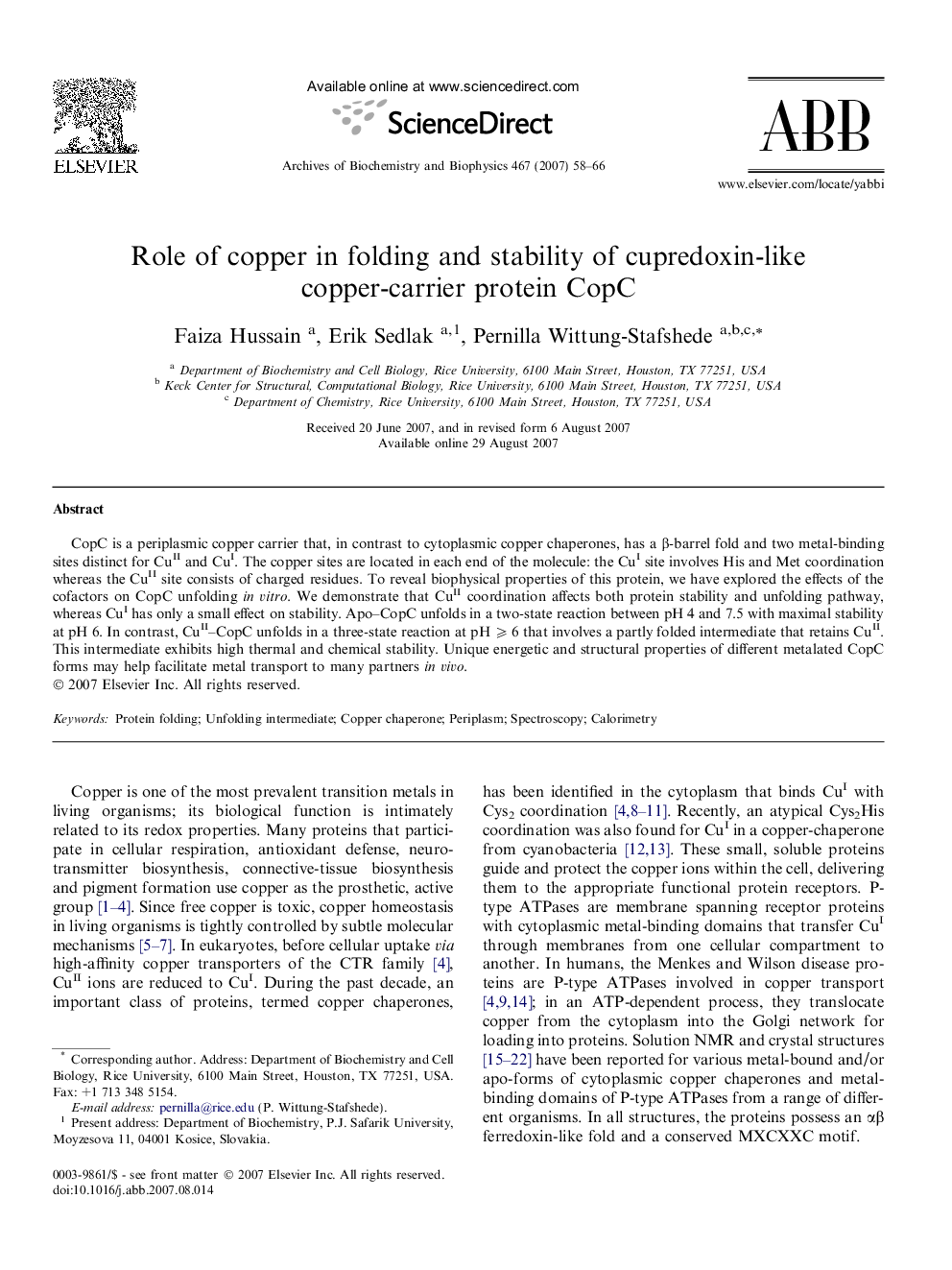| Article ID | Journal | Published Year | Pages | File Type |
|---|---|---|---|---|
| 8292075 | Archives of Biochemistry and Biophysics | 2007 | 9 Pages |
Abstract
CopC is a periplasmic copper carrier that, in contrast to cytoplasmic copper chaperones, has a β-barrel fold and two metal-binding sites distinct for CuII and CuI. The copper sites are located in each end of the molecule: the CuI site involves His and Met coordination whereas the CuII site consists of charged residues. To reveal biophysical properties of this protein, we have explored the effects of the cofactors on CopC unfolding in vitro. We demonstrate that CuII coordination affects both protein stability and unfolding pathway, whereas CuI has only a small effect on stability. Apo-CopC unfolds in a two-state reaction between pH 4 and 7.5 with maximal stability at pH 6. In contrast, CuII-CopC unfolds in a three-state reaction at pH ⩾ 6 that involves a partly folded intermediate that retains CuII. This intermediate exhibits high thermal and chemical stability. Unique energetic and structural properties of different metalated CopC forms may help facilitate metal transport to many partners in vivo.
Related Topics
Life Sciences
Biochemistry, Genetics and Molecular Biology
Biochemistry
Authors
Faiza Hussain, Erik Sedlak, Pernilla Wittung-Stafshede,
